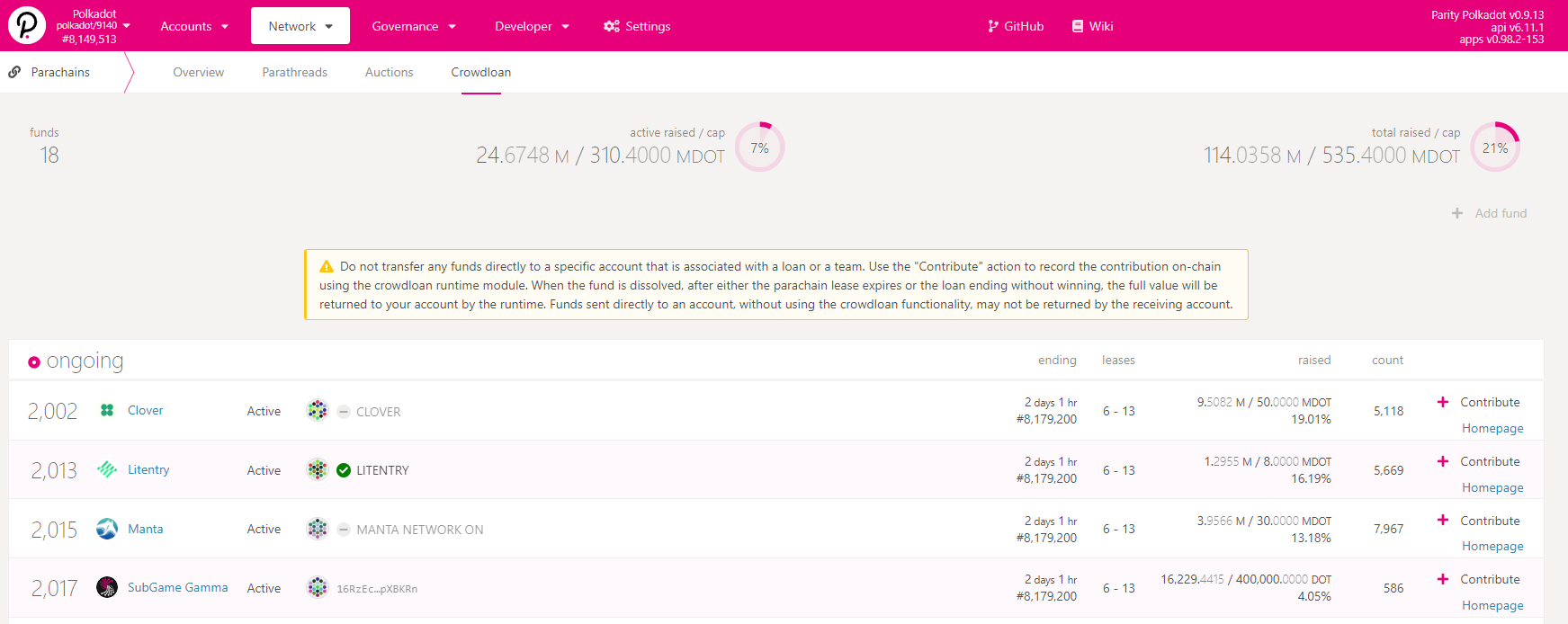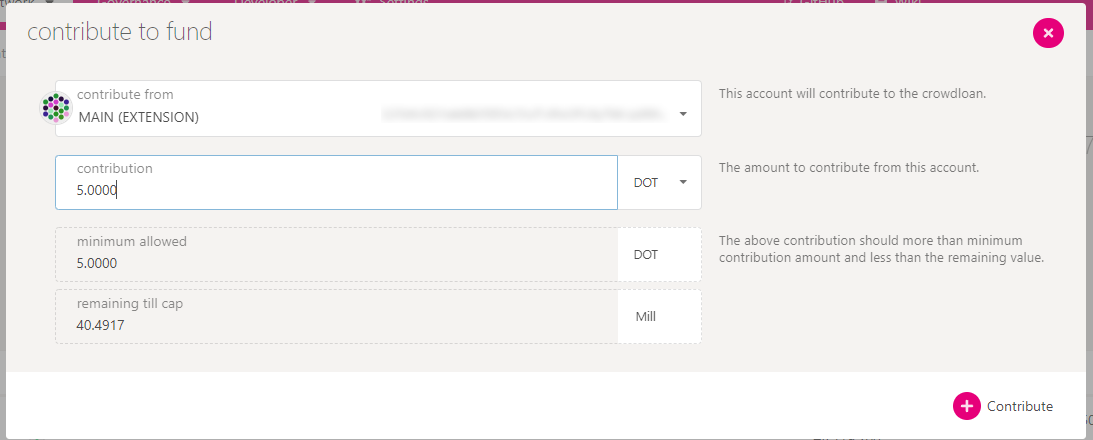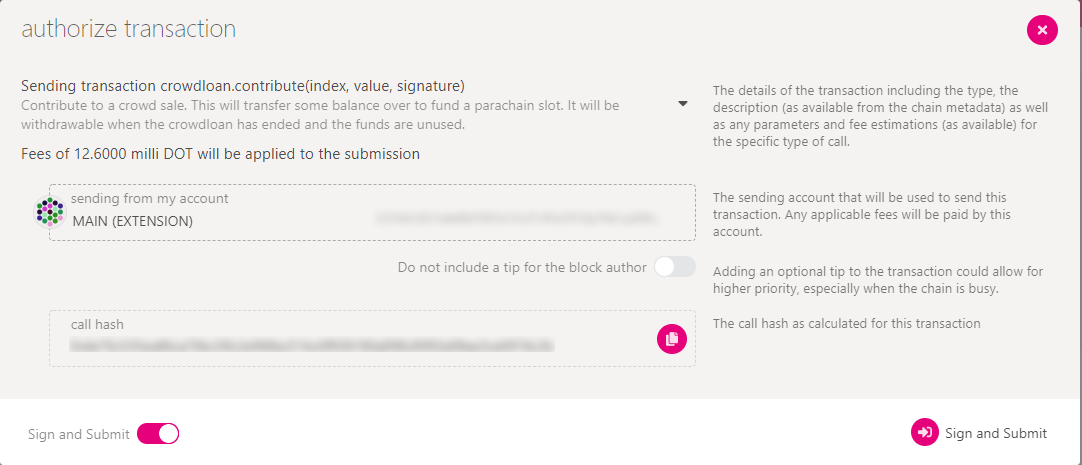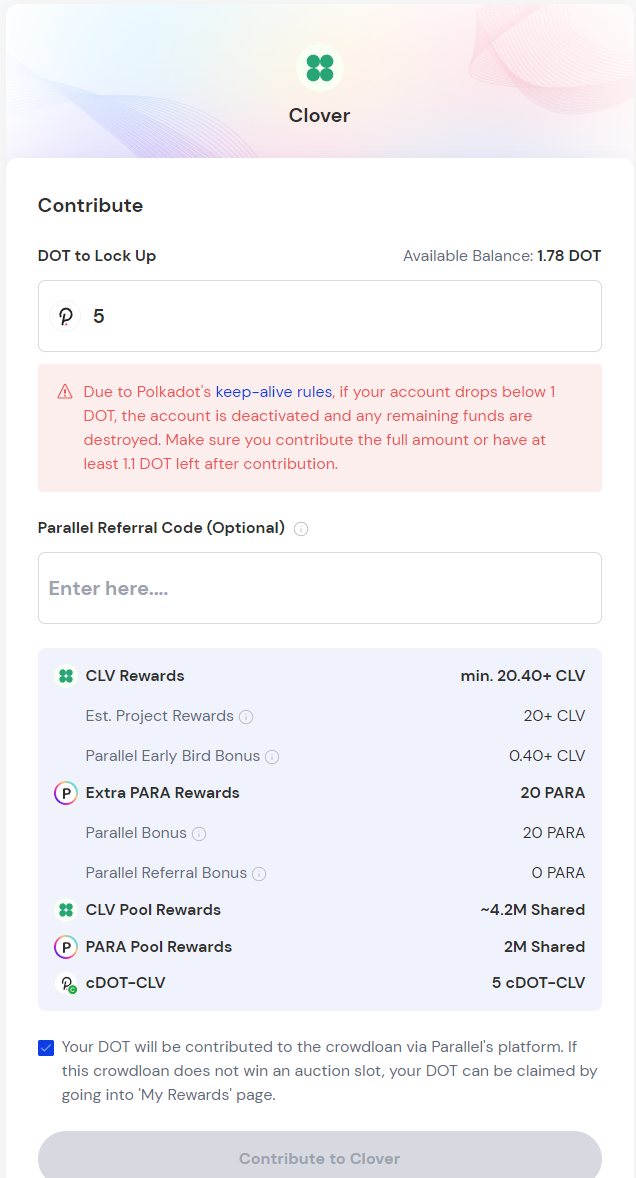Overview
Crowdloans are a type of fundraising seen in the Polkadot ecosystem to help projects win a parachain slot for some amount of time. Each parachain serves as a sovereign blockchain, and there are a limited amount of slots available, so projects have to compete for a slot by winning an auction.
If a project is successful in obtaining a parachain slot, the funds from the crowdloan are locked for the duration of the lease of that slot (92 weeks). Successful projects typically reward contributors by airdropping some amount of the project token.
If the crowdloan is unsuccessful, funds are returned to contributors.
To participate in a crowdloan, there are three main ways to do this. Through Polkadot JS Apps, Parallel Fi, or through centralized exchanges.
Polkadot JS Apps
Polkadot JS Apps is a portal for interacting with the Polkadot ecosystem. Through it, users can take various management actions such as voting on proposals, inspecting blocks, managing accounts, viewing parachains, and most importantly in our case, interacting with crowdloans.
This is the native method for participating in a crowdloan.
To interact with Polkadot JS Apps, users must create an account and have an extension to manage that account. This will allow users to sign a transaction and manage their data/assets.
This article from Polkadot goes over how to setup the Polkadot{.js} browser extension, which is a recommended extension for creating/managing a Polkadot account.
Once created, users can go to Polkadot JS Apps, navigate to the "Network" dropdown, then select "Parachains", then click on the "Crowdloan" tab. Or, by going to the link here. The crowdloans page is seen below.

From here, we can see all the active crowdloans. Once you've found a project that you want to contribute to (and have funded your account), we can contribute to a crowdloan.
It's a fairly straightforward process from here. We click "Contribute" and then input the amount of DOT to contribute. This input screen is shown below.

Next, we need to review and authorize the transaction. This screen is shown below.

After clicking "Sign and Submit", the connected wallet should show a pop-up to sign the transaction.
Keep in mind, that the minimum contribution is 5 DOT. Also, you want to make sure to either contribute all DOT or have at least 1 DOT remaining in your account. Wallets with less than 1 DOT will have their DOT destroyed due to the Polkadot existential deposit.
If the crowdloan is unsuccessful, the DOT should be automatically returned.
Parallel Fi
Parallel is a platform on Polkadot which offers a managed option to contribute to a crowdloan.
This option also requires users to have an account to interact with apps on Polkadot. See this article from Polkadot on how to setup the Polkadot{.js} browser extension and create an account.
This option is decentralized, but involves another layer of risk because a third party is managing your contributions. The upside is a more managed and simple contribution experience, plus Parallel typically offers a bonus of PARA to users who contribute through their platform. It's a trade-off which each user has to evaluate for their own situation.
Rewards, current contribution, and returned DOT are all managed through Parallel.
To see all active crowdloans, we can go to Parallel's app and then the "Crowdloan" tab. Or by going to this link here.
After selecting a crowdloan, users walk through Parallel's fairly simple UX to contribute.
This involves, selecting the amount of DOT to lock up, then viewing potential rewards, and finally signing the transaction. The first screen, the input stage, is shown below.

Centralized Exchanges
Some centralized exchanges provide an opportunity to contribute to a crowdloan through their own platform.
These exchanges provide an easy-to-manage experience, but keep in mind that the centralized exchanges are the ones who have custody of your DOT and any rewards you obtain from crowdloans. For a good amount of people, this is an acceptable trade-off, but going into that is beyond the scope of this article.
Below, I'll list the known exchanges which support crowdloans and the links to their "how to" pages.
Note that some exchanges limit who can participate in crowdloans by jurisdiction and KYC requirements.
Supporting exchanges: